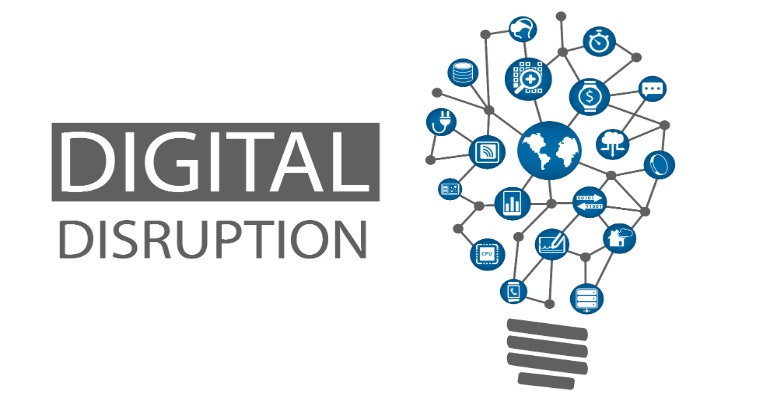Digital transformation isn’t just a tech buzzword. It’s today’s reality. Are you helping customers get it right?
September 17, 2018

By Raman Venkatraman
Being strategic with how data – today’s digital currency – and other transformative solutions are employed has immediate implications on the success of any business, across industries. In other words, your customers can’t look at digital transformation as a strategy in itself. It is a means to address their business objectives.
The most successful companies realize they shouldn’t adopt technology for its own sake, but instead be selective and choose tech that creates a competitive edge by saving money, time or materials. MSPs that push shiny objects for their own sake aren’t doing anyone any favors. And in fact, in my experience, the people who support cloud management, data analytics and other digital solutions have a keen sense of what is working — and what is not. The IT specialists who manage infrastructure can quickly and routinely identify technical issues, and when companies take the time to map these problems to desired business outcomes, they can be important advisers to drive performance.
There are three important questions MSPs can ask company and IT leaders to determine their best digital transformation road map: What are we doing by way of technology currently? How can these technologies drive more value across the organization? And what is the business objective this solution aligns with?
Where Are We Now?
Many enterprises are bound by legacy systems that are, in today’s cloud-enabled environment, sometimes limiting their capabilities. These systems are often complex, rigid and costly to maintain; plus, major enterprise vendors like Microsoft, SAP and Oracle are laser-focused on cloud and next-generation technology investments, meaning on-site infrastructure could soon be obsolete.
In fact, a 2018 LogicMonitor survey of industry analysts posits that 83 percent of enterprise workloads will exist in the cloud by 2020 — only two years from now. Many companies are planning ahead to ensure their businesses are not only equipped to manage the abundance of information today, but tomorrow. For example, TCS’ alliances and technology unit is currently working with a leading airline on a multiyear application-modernization journey to migrate their applications from monolithic to microservices architecture. This transformation will help them release new features faster and scale quickly, yet precisely, in today’s fast-paced environment.
The first step to powering digital transformation is to ask: Are the systems we have in place delivering the desired business outcomes? If the answer is no, what changes do we need to make? For an MSP, this is an opportunity to advise on whether there are existing solutions available to get customers where they want to go, or if they need support to develop a customized platform to reach their goals.
What’s Our Technology Strategy?
To meet the needs of digital customers, organizations must transform into digital businesses. What does that mean, exactly? In short, they must become very agile, flexible, responsive and efficient. Identifying opportunities to help customers streamline their systems and innovate, rather than conform to existing technologies, will continue to propel your business forward.
When developing a digital strategy, it’s crucial that business leaders think about how solutions will make an impact across the organization, from HR to sales, legal and finance. Many times, the solutions used in one department don’t mirror those in another, so finding synergies that allow companies to innovate for their own needs is critical. Working with alliance partners is an important part of this process. At a minimum, an enterprise-wide digital strategy will help you recommend investments that serve the customer across some or all functions.
For example, a leading integrated technology solutions provider in the retail petroleum industry, part of a large industrial conglomerate, recently worked with my team to implement a public-cloud-based custom solution for IoT analytics by leveraging cloud-native services for ingestion and processing of streaming data in real-time.
How Will We Navigate Change?
The most important part of a success digital-transformation campaign is putting it in context for company needs. When customers merely shift from current to new applications and infrastructure, they overlook opportunities to advance or extend their business models and stakeholder experiences. But when you help executives emphasize business drivers in their decision-making, they will see more possibilities for using the cloud beyond cutting capital expenses, ending software maintenance contracts and reducing IT staff.
Most businesses realize that new technologies are essential to meet customer needs in a digitally connected world, and many are already pursuing some level of tech-driven transformation. As your customers become more savvy about the tools available, it’s essential for MSPs to provide planning and advisory services to help them get their efforts right in a constantly evolving marketplace. Mistakes and missteps are expensive. Once business leaders have identified the technologies that will create revenue and improve the customer experience, being the right partner to evolve and meet new needs is the most critical step to add value in today’s digital marketplace.
Raman Venkatraman, VP & global head, alliances & technology unit, has been with Tata Consultancy Services (TCS) for over 20 years and held multiple leadership roles in the last 15 years. His extensive experience spans geographies, having successfully advised large global corporations in smart sourcing, which has resulted in significant savings to these companies.
You May Also Like
